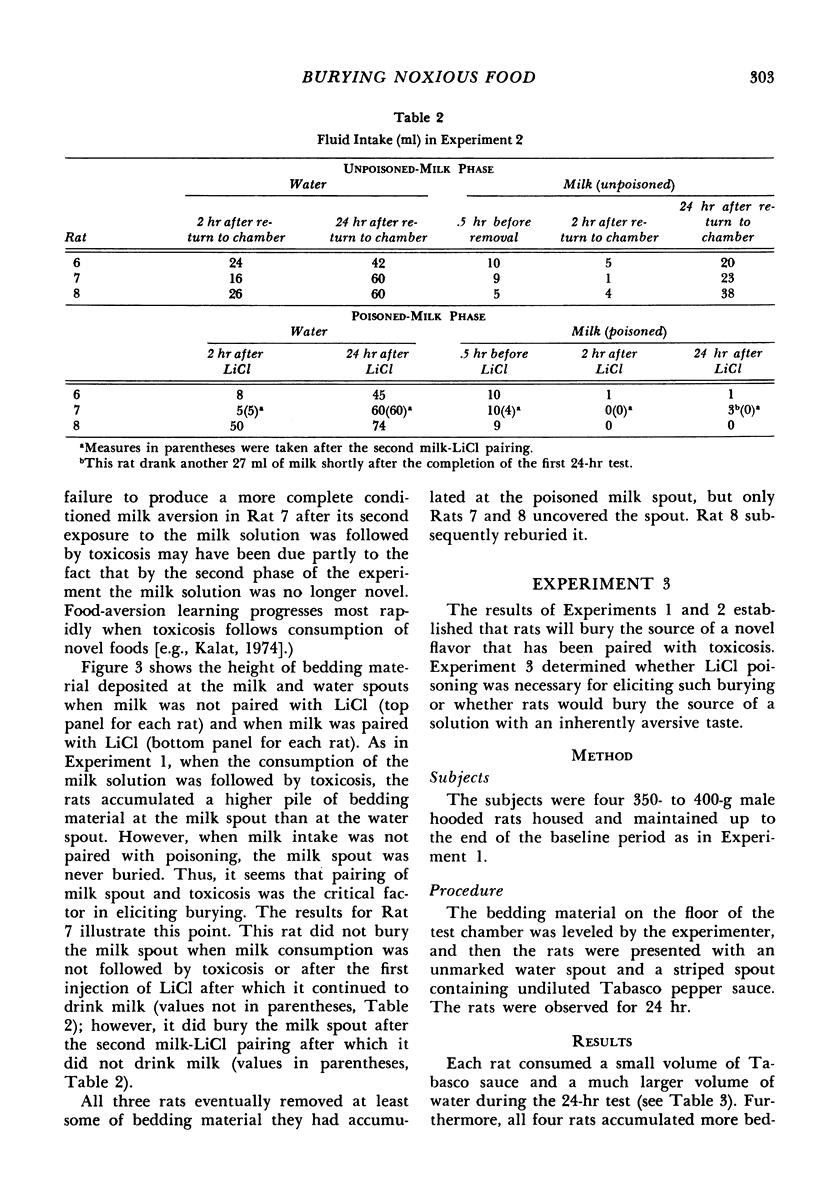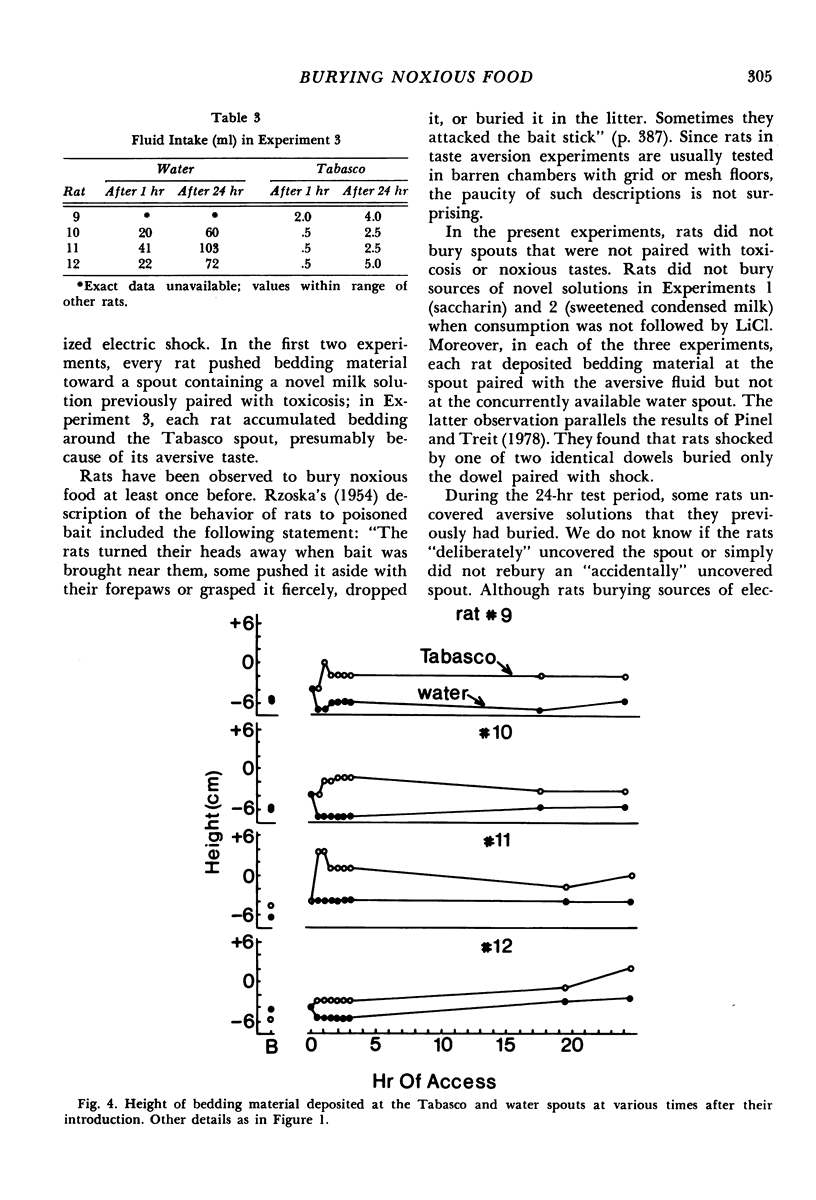Abstract
In Experiment 1, rats living in chambers containing bedding material were injected with a toxicosis-producing dose of lithium chloride shortly after their initial taste of sweetened condensed milk. They consumed no additional milk and used the bedding to bury the spout through which the milk had been delivered, although they did not bury a concurrently available water spout. In another control condition, rats did not bury a spout containing a novel solution (saccharin) not paired with toxicosis. In Experiment 2, rats did not bury a milk spout until milk consumption was followed by toxicosis. In Experiment 3, rats buried a spout containing Tabasco pepper sauce but not a concurrently available water spout. Thus, burying the food source appears to be an integral component of the rat's defensive reaction to noxious food.
Full text
PDF







Selected References
These references are in PubMed. This may not be the complete list of references from this article.
- Bronstein P. M., Hirsch S. M. Ontogeny of defensive reactions in Norway rats. J Comp Physiol Psychol. 1976 Jul;90(7):620–629. doi: 10.1037/h0077224. [DOI] [PubMed] [Google Scholar]
- Garcia J., Hankins W. G., Rusiniak K. W. Behavioral regulation of the milieu interne in man and rat. Science. 1974 Sep 6;185(4154):824–831. doi: 10.1126/science.185.4154.824. [DOI] [PubMed] [Google Scholar]
- Kalat J. W. Taste salience depends on novelty, not concentration, in taste-aversion learning in the rat. J Comp Physiol Psychol. 1974 Jan;86(1):47–50. doi: 10.1037/h0035958. [DOI] [PubMed] [Google Scholar]


